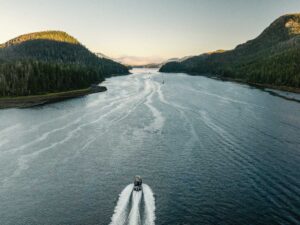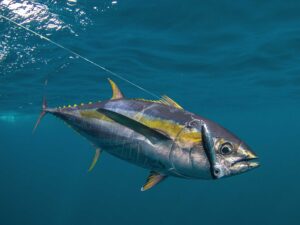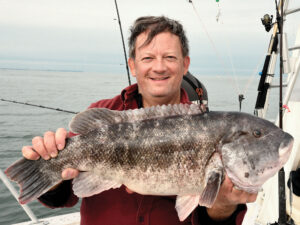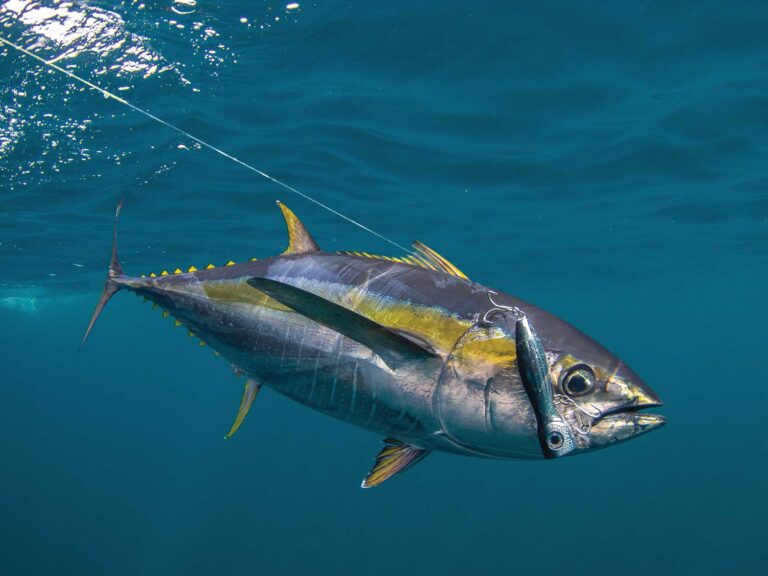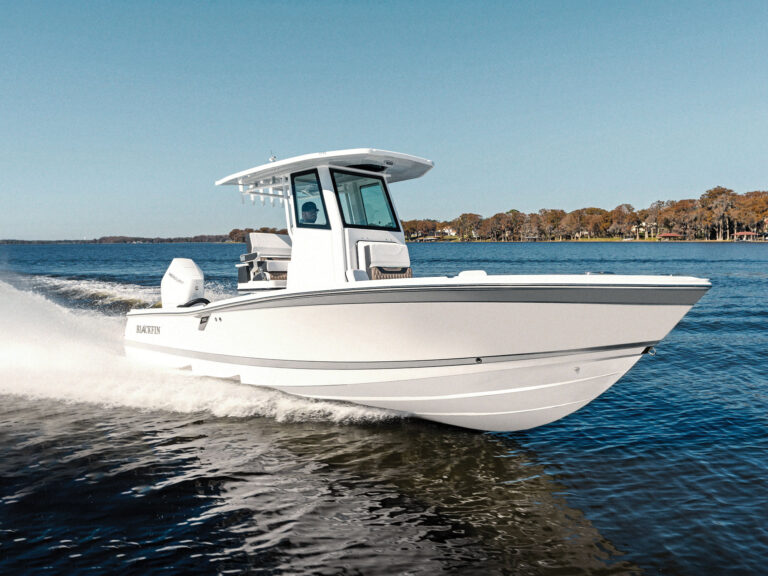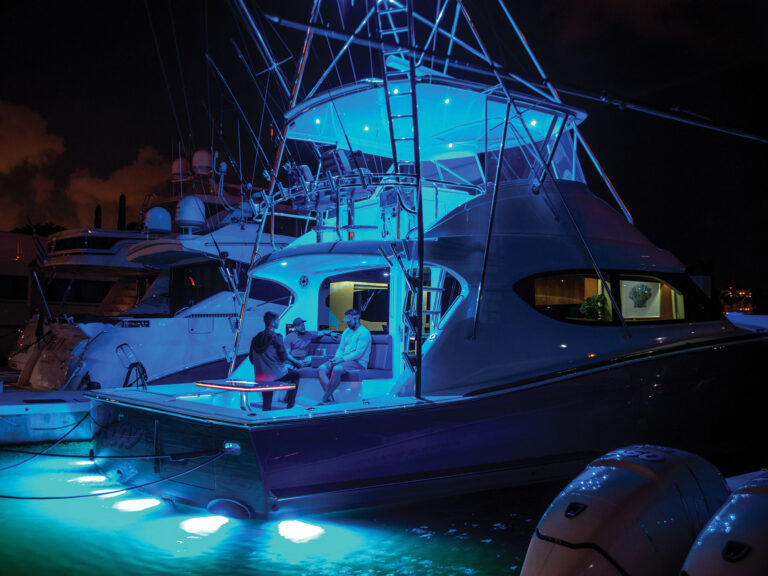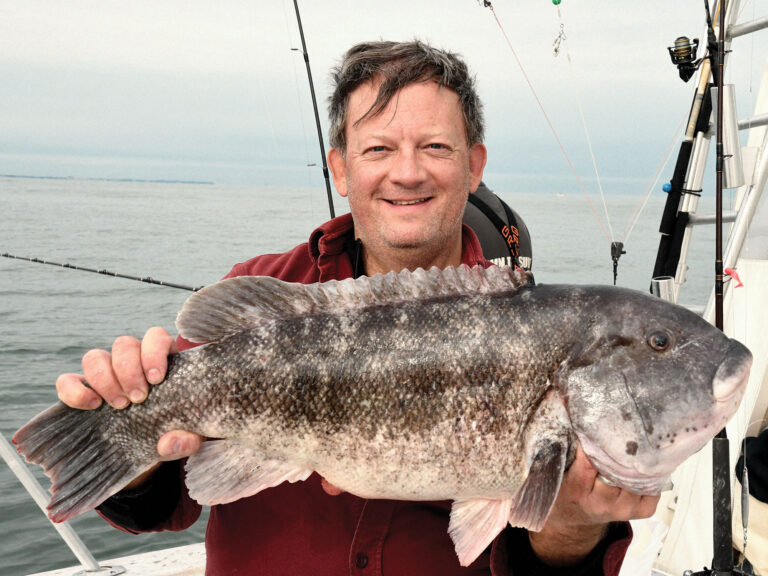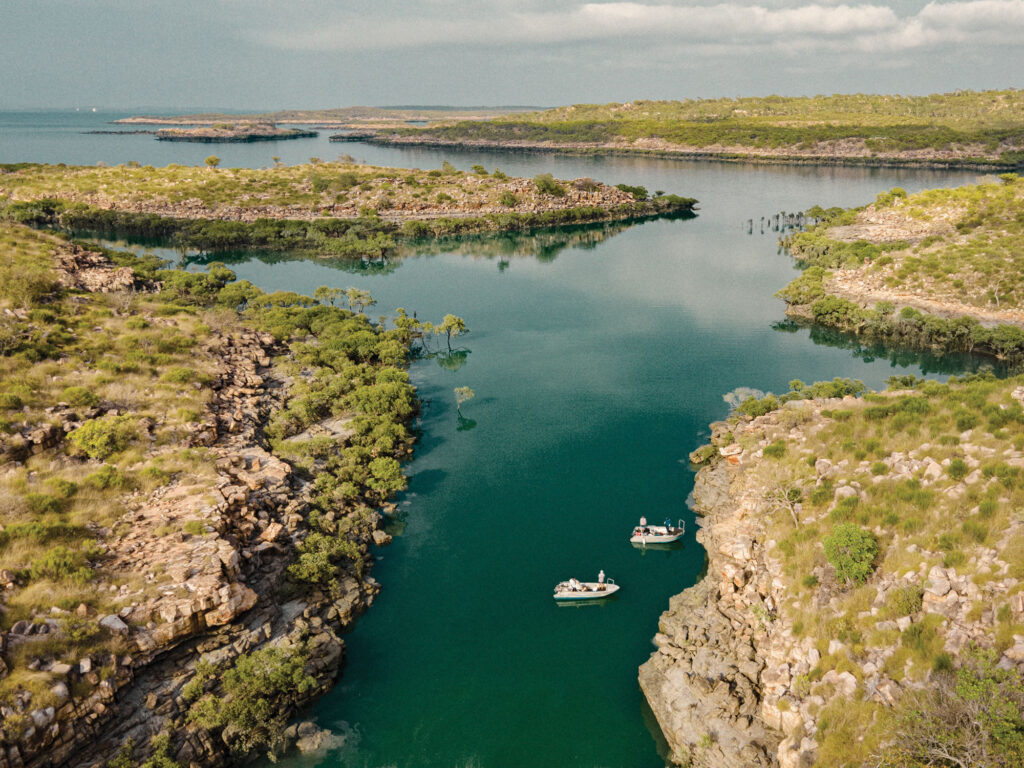
You know you’re not in Kansas when:
1. You ask your guide about the 8-foot length of bamboo in a gunwale rod holder, and he says, “Oh, I use that to discourage aggressive crocs that get too close.”
2. You’re working a topwater lure over the very tops of mangrove trees rather than around the roots.
3. Wallabies—small kangaroos—hop across your path on your way to the dock.
I was far from Kansas—9,560 miles as the crow flies. That’s the distance from Kansas City to an obscure place called Kuri Bay in northwestern Australia. The spot sits in the heart of the most northwesterly reaches of the continent, a region called the Kimberley. Never heard of it? Don’t feel bad; for a great many Australians, this vast area (164,000 square miles) remains a mystery, as few have ventured here. Saltwater crocodiles probably outnumber human inhabitants.
What tempted me—joined by Adrian Gray of the International Game Fish Association—into spending well over 24 hours in the air from Florida to Broome, Australia, to this rugged coast? Fishing, of course.
And fish we did, for four full days, at Kuri Bay. We marveled at Indo-Pacific gamefish like nothing anglers catch back home and at a landscape like nothing we’d ever seen anywhere, like extraordinary rock formations and escarpments with gorges gouged deeply into towering red sandstone cliffs.
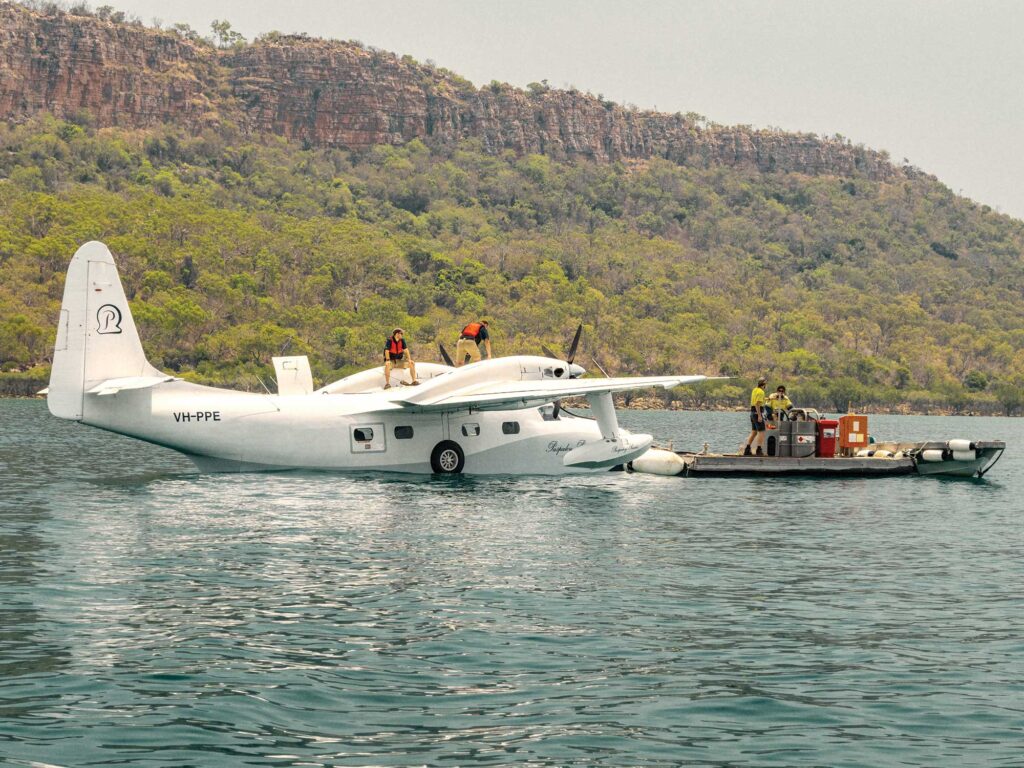
Tangling With Trevally
We disembarked from the Grumman Mallard floatplane that brought our group of four anglers from Broome, about a one-and-a-half-hour flight. We briefly organized gear in our rooms at the Paspaley Pearl Farm and, after a quick bite of lunch, Kuri Bay Sport Fishing Tours operator Peter (Tux) Tucker had us in two boats leaving the dock for some afternoon fishing.
All fishing here is planned around the tides, our guide Olly Farrant explained to Gray and me as we pulled away from the dock in the small “tinny,” as aluminum skiffs are called here. Accordingly, we stopped to drift over shallow reefs off an island.
Gray cast his go-to lure, a chartreuse ¼-ounce leadhead with a 3-inch paddle tail. Almost immediately, he was straining against a giant trevally. Though it wouldn’t qualify as a giant, the GT still proved a tough customer on his light spinning outfit with 15-pound braid. After that fish was unhooked and released, Gray promptly hooked up again, this time to a beautiful golden trevally, somewhat smaller than the GT but still large enough to test Gray’s gear.
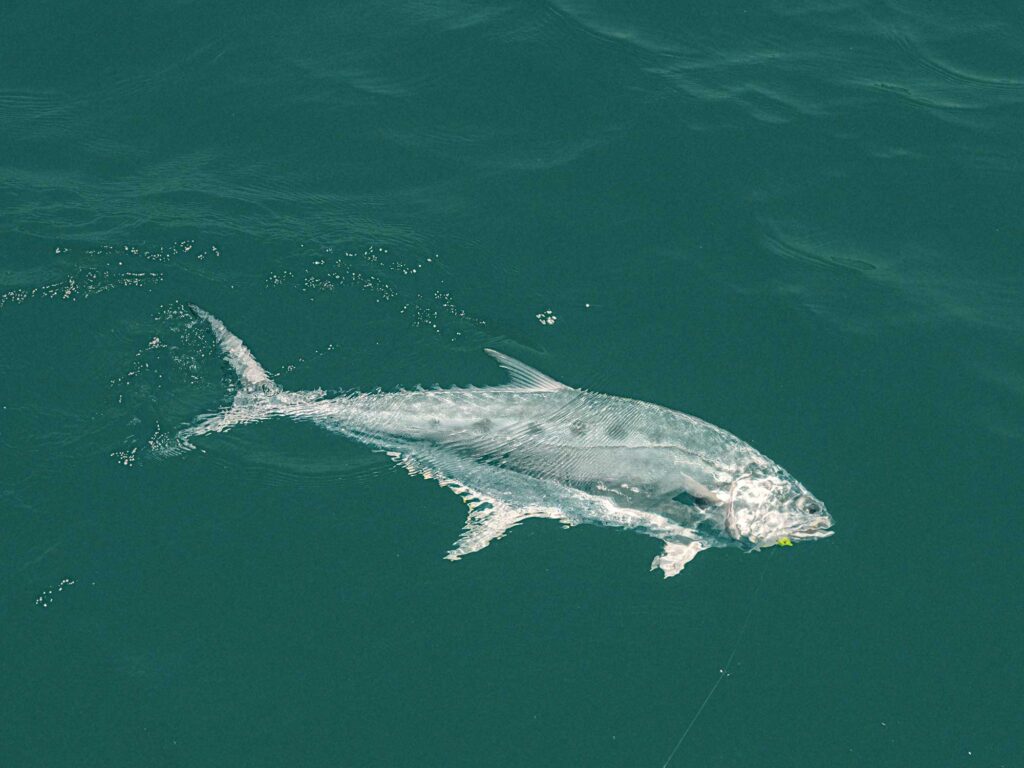
The clarity of the waters here surprised me. While flying here over a considerable length of the Kimberley coast, I noticed the coastal waters were generally pretty turbid—green or brown and muddy. That, Tucker explained, is why one gamefish that’s rare at Kuri, but fairly abundant in most of northern Oz, is the king threadfin. Threadies feed in the sort of very shallow, muddy creeks that are uncommon here.
But Kuri Bay doesn’t suffer from a lack of species anglers can catch. We went on to land more varieties of trevally that afternoon, including a stunning chrome-sided diamond trevally, close cousin (same genus) to the African pompano; a couple of small types of grouper (“cod” in local parlance); a queenfish; and the Indo-Pacific version of our gray snapper, known as a mangrove jack in Australia.
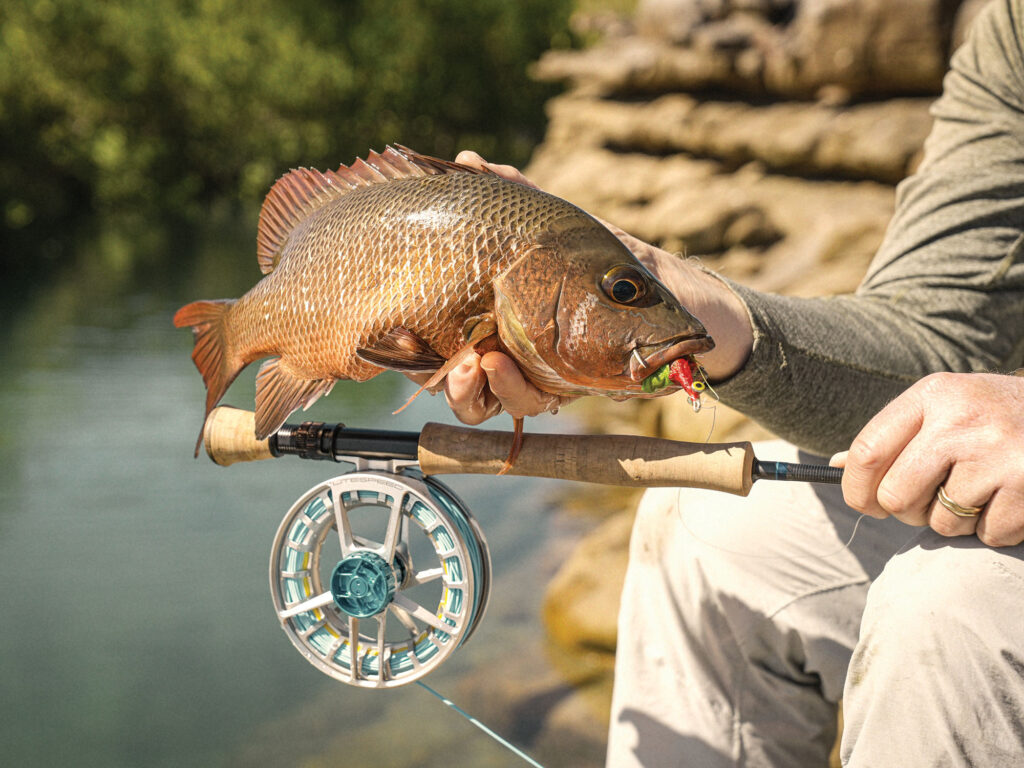
A Lure Angler’s Dream
The next morning, we picked up where we had left off the evening before, throwing leadheads and plastics, poppers, stickbaits and small metal jigs. We drifted an area of rocks and boulders where the clear water was swept by swift tidal currents. I was the kid in the candy store.
This area seemed to be a popular snack bar for many predators, which we could often watch smash our lures. We caught golden and brassy trevally to 15 or 20 pounds, and one heavier GT, plus various cod (including malabar and gold-spotted grouper). The aggressive little Spanish flag snapper—lit up in brilliant yellow stripes—were a dime a dozen. There were also barcheek coral trout around, one of which proved too big for me to muscle out of the rocks, though I did get a good look at it in the clear water.
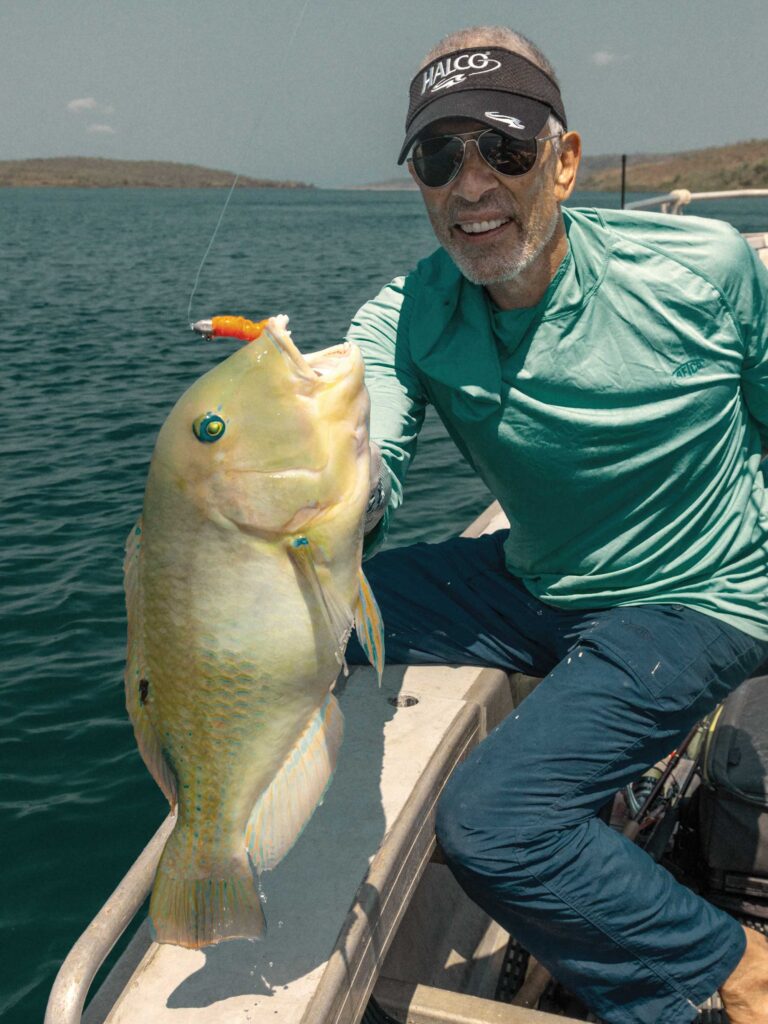
A high point for me that afternoon came when I hooked a bluebone on a Halco Madeyes soft lure. Technically known as a blackspot tuskfish, these large wrasse are known to be tough to land when hooked. Only with luck, patience and coaxing did I manage to get that one to the boat. The effort also paid off as dinner that evening.
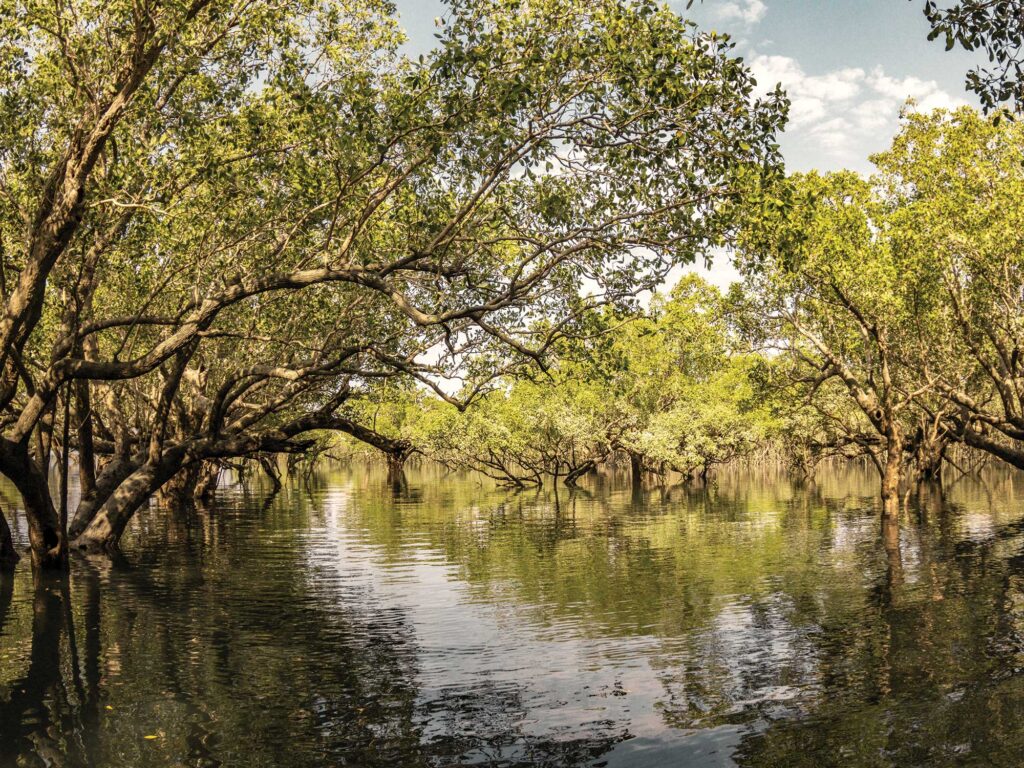
Tides Higher Than Trees
The afternoon found us in a whole different neighborhood. On the falling tide, Farrant had run us up into a mangrove-filled bay. He explained that as the tide falls, barramundi are forced out into the deeper center of the bay. However, the tide still had some way to go until that stage. I found it fascinating to be casting over the tops of mangrove trees, where only the tops were visible. It was hard to wrap my head around the fact that these trees would be nearly fully exposed in a few more hours.
One of the anglers in the other lodge boat—skippered by guide Sam Ward—was Aussie native Greg Loudoun, who did manage to catch a barra. Gray hooked a barra with some weight behind it, but it immediately blasted skyward and, far above the water, angrily tossed the lure back to us. While we cast poppers and plastics with barramundi in mind, queenfish and blue salmon (a species of threadfin) attacked our lures too.
At one point, we ran 20 minutes or so to fish a narrow, winding chasm cut into towering cliffs, a backdrop so eye-popping that catching fish almost seemed an afterthought. In fact, casting along spectacular rock formations along shorelines provided dramatic landscapes often during our visit.
On the way back to the lodge, we finally spotted some bird activity in open water that warranted investigation. The group just before us had enjoyed fast fishing for longtail tuna most days, and we were hoping to run into schools of the coastal tuna crashing bait. But they were gone far too quickly as we tried to run to the activity.
Read Next: Barramundi Fishing in Australia’s Northern Territory
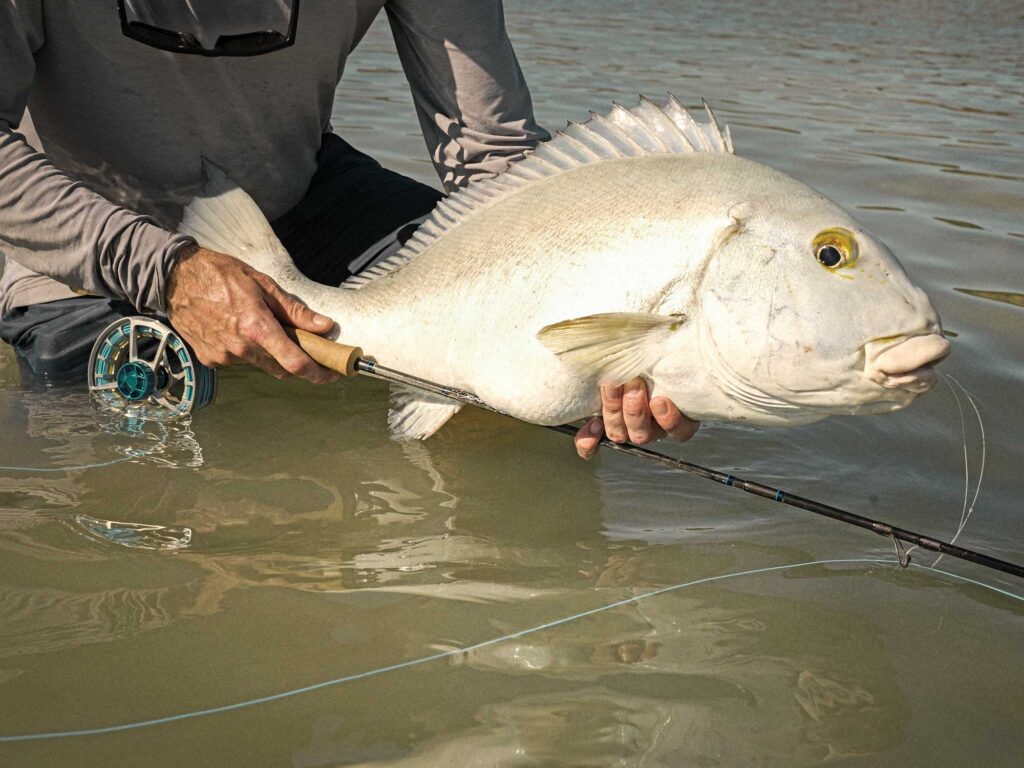
Light-Tackle Sport
None of our small group fly-fished, but that’s something Tucker hopes to see much more of, since he feels it’s a particularly rewarding opportunity to fish Kuri Bay’s clear waters, where sight-casting is more feasible than in most of the Kimberley.
Otherwise, the name of the game here is primarily light-tackle sport. Of course, anglers can bring their favorite gear; however, the lodge offers appropriately light spinning outfits, and guides carry an assortment of lures. They’ll also cast-net mullet to hook up for less-experienced anglers, giving them the opportunity to fish live bait.
Gray and I chose to stick with lures. Overall, small leadheads with Halco Madeyes and Z-Man soft plastics were the ticket for just about everything. Similarly, any species proved likely to grab the little 2- to 3-inch Halco Outcast jigs (in particular, the red-and-chrome model, a queenfish killer). We also did well with Halco Roosta Poppers (135 to 160 mm), a must for giant trevally. Tucker and his guides are especially fond of light bucktail jigs, another artificial that just about everything seems to strike. Lastly, carry a few hard-plastic blade-type vibe lures.
With a limited season and the resort hosting such small groups, only a handful of lucky anglers will ever get to fish Kuri Bay. Most would call it the fishing experience of a lifetime.


